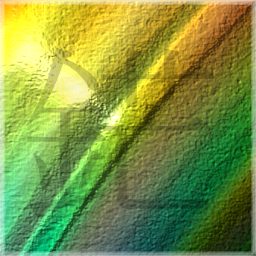- cross-posted to:
- linux@lemmy.ml
- cross-posted to:
- linux@lemmy.ml

DRM = Direct Render Manager
I had no idea, was confused, and the article never de-acronyms/initialisms the term

Not to be confused with Digital Rights Management, another far more widely used DRM acronym. No worries, it’s not like that’s confusing or anything.

@towerful Thanks. I was wondering why there was a “panic” mode for digital rights management in the kernel.

Ha, thank you. I clicked through two of the links to get context and none of them defined “DRM” and was like “I guess…everyone else knows what this means?”

My personal frustration is that even though I know it doesn’t mean Digital Rights Management in this context, I can never remember what it does stand for.

Where is all the information? This looks about as useful as when somebody says “I have a problem” without going into any more depth. Great, you have a problem, but with what? What was happening before you ran into it? Did you do something? What happened after you ran into the problem?
Maybe I’m missing something here, but copying Microsoft’s error handling is not the way I’d go about things.

Why is it blue?

Tradition.
- cheddar ( @cheddar@programming.dev ) 8•3 months ago
What color should the blue screen of death be if not blue! I guess it’s coming from Windows: https://en.wikipedia.org/wiki/Blue_screen_of_death
An early blue error screen first existed in the Beta Release of Windows 1.0; if Windows found a different DOS version than it expected, the error message “Incorrect DOS version” alongside other text messages detailing what check failed to pass would be appended to the boot screen before starting normally.

When something hits you in the face you turn blue. This essentially hits you in the face, and matches that color.

Great, potterydung enshittified Linux to the point they added DRM to the death handler.
(only half-kidding, anti-Linux is explicitly what potterydung is trying to do; but it never ceases to amuse me that the name for the manager thingy was chosen to acronym to DRM. How will we ever know when DRM (pejorative) is actually added to Linux video?)

Direct rendering infrastructure in Linux predates widespread use of “digital rights management” as a term of art by about two or three years. “We were here first,” as the saying goes. That said, the specific concept of direct rendering managers is a little newer, and probably was a mistake on its own merits, regardless of the name.

“We were here first,” as the saying goes.
True. As corporate goes, take a good product name that exists in the wild, bury it with your own shitty product, best case you get to kill two products for the price of one (eg.: Google with “Gemini”).

I have no idea what you’re talking about but you seem to be quite upset about something I guess
This is the best summary I could come up with:
After being talked about for years of DRM panic handling and coming with a “Blue Screen of Death” solution for DRM/KMS drivers, Linux 6.10 is introducing a new DRM panic handler infrastructure for being able to display a message when a panic occurs.
With Linux 6.10 the initial DRM Panic code has landed as well as wiring up the DRM/KMS driver support for the SimpleDRM, MGAG200, IMX, and AST drivers.
For those curious what DRM Panic can look like in action, Red Hat engineer Javier Martinez Canillas shared a photo of the DRM Panic “Blue Screen of Death” in action.
A BeaglePlay single board computer was used and Javier posted to Mastodon of an example implementation:
It could be extended in the future with some operating systems having looked at QR codes for kernel error messages and other efforts for presenting more technical information while still being user-friendly.
On Linux 6.10+ with platforms having the DRM Panic driver support, this “Blue Screen of Death” functionality can be tested via a route such as echo c > /proc/sysrq-trigger.
The original article contains 231 words, the summary contains 177 words. Saved 23%. I’m a bot and I’m open source!

Somehow Lennart is behind this further cancer, despite pupating into a Microsoft Employee as expected.

I guess that’s what I’m gonna see soon when bing video search crashes my plasma desktop or freezes my entire system again, or whatever other websites using whatever techniques causing this.


